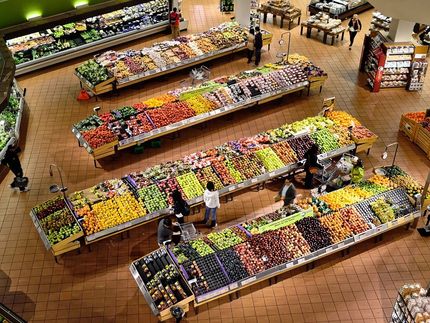Food safety in Europe - who does what?
The BfR publishes the third, extended edition of the EU Food Safety Almanac
Advertisement
The horse meat scandal of January 2013 once again made it clear: food scandals do not stop at national borders. The value-added chain in food production reached European dimensions a long time ago in that both raw materials and semi-finished goods are now traded and distributed across national boundaries. The concept of safety along the entire food chain therefore requires a Europe-wide network of all public institutions responsible for food safety to ensure consumer protection. For this purpose, the third edition of the EU Food Safety Almanac issued by the Federal Institute for Risk Assessment (BfR) offers a clear overview of the structures and institutions of food safety of 35 European states and at the European level. "Smooth cooperation between state players in Europe strengthens food safety. If the players and structures within the European states are known to all stakeholders, w e can cooperate more efficiently, avoid duplications and, last but not least, react more quickly and appropriately", says Professor Dr. Dr. Andreas Hensel. As President of the BfR and as the German member of the Advisory Forum of the European Food Safety Authority (EFSA), he is responsible for the risk assessment of food and feed both at the national and European level.
Each one of the 35 country profiles of the EU Food Safety Almanac contains a graphic overview of the public authority structure as well as a detailed description of the role and activities of the various institutions. Areas of responsibility are represented visually, i.e. in the form of ten icons. The EU Food Safety Almanac of the BfR states, for example, which authorities are responsible for the assessment of pesticides, health-related information (health claims) and of illnesses that can be transmitted from animals to humans (zoonosis). At the same time, readers learn what ministries of the member states are responsible for what areas of risk management, how risks are communicated and to what extent risk assessment and risk management are institutionally separated.
New compared to the second edition are the profiles of the two EU accession states Serbia and Montenegro. Overall, the third edition of the Almanac is even more user-friendly compared to earlier versions on account of its graphic design with colour-coded central and regional and/or local institutions.
The brochure is intended for all those who would like to obtain information on the legal structures and institutions relating to food safety in Europe, especially experts at the grass roots such as employees of food safety authorities, the media, parliamentarians, consumer associations, the food industry and scientific institutions. The development of the edition shows that there is a great need for such information: the number of almanacs printed doubled from the first to the second edition.
The BfR which has been appointed the EFSA Focal Point for Germany, developed the EU Food Safety Almanac in close cooperation with the EFSA Focal Points of the other European states. Available in German and English, the EU Food Safety Almanac can be downloaded from the website of the BfR free of charge. In the year 2014, a Spanish, French and Chinese version will be available as well.


































































